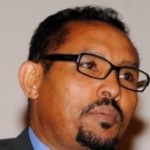 A new USD 550 million educational program is being implemented by the government attempting to get more students enrolled and finishing school while increasing the amount of knowledge they learn.
A new USD 550 million educational program is being implemented by the government attempting to get more students enrolled and finishing school while increasing the amount of knowledge they learn.
The second General Education Quality Improvement Program (GEQIP II) has similar goals to its predecessor.
The new four year program will focus on improving; learning outcomes, completion rates in grades 5 and 8, and gross enrollment in the first and second cycles of secondary education. The plan will be put into place throughout regional administrations, including 900 weredas, ten universities, 36 teacher education colleges, 40,000 schools and alternative education centers. It emphasizes math and language calling for more students to be at or above competency in both subjects by grades 4,8,10, and 12. The program hopes to get the community more involved in schools. It also calls for prioritizing needs and making schools have the resources they need to teach.
The program calls for funding for educational expenses other than salaries to remain the same percentage of the federal pie as current levels. Funding is given based on the school enrollment rate. According to the ministry report, 32,446 schools received grants amounting to 3.2 billion birrThe USD 550 million will come from the following contributors: the World Bank in the form of a USD 130 million loan, DFID USD 186 million, Global partnership for Education, USD 100 million, Finland, USD 27 million, USAID USD 20 million and Italy USD 10 million. The rest will come from the federal treasury.
Primary school beneficiaries of the project are expected to be 21.6 million students from grades 1 to 12, of which 10.5 million are expected to be girls. The secondary educational beneficiaries are expected to be 456,000 teachers of which 182,000 are expected to be females. GEQRIP II consists of six complementary components. A teacher development program, school development program, management and capacity building, which includes an education management information system, program coordination, monitoring, evaluation, and communication. Shiferaw Shigute, Minister of Education, told Capital that the current phase will also add the ICT. He said that about 300 schools will be included in the pilot project which will include the establishment of IT laboratory and it will expand to other schools in the future.
The first program lasted from 2009-13 and cost USD 447 million. Attempts were also made to implement it throughout the educational system. In the first program 70,000 copies of the curriculum were printed in English and distributed throughout the country, while 335 teachers were trained. During the first program, 78 million textbook and teacher guides were developed and distributed. There also was a teacher development program.
The major objective was to upgrade teachers’ educational levels, improve the selection of entrants to teacher training and prepare well qualified pre-service teachers and develop teaching materials for teacher training institutions. Now the new alternative basic education (ABE) curriculum has been developed and 13,000 copies of two-volumes were printed and distributed in early 2013. According to the ministry document, a draft textbook directives and guidelines were prepared in English, translated and finalized in Amharic and shared with the regions in soft copy during the 2013 school year.
The first GEQIP program was designed as a way to fund school improvement because financial resources, particularly for secondary education, are very limited. Prime Minister Hailemariam Desalegn and other officials from the donor community were part of the roll-out program at UNECA on Tuesday January 28.
By Muluken Yewondwossen, CapitalEthiopia




























Join Conversations